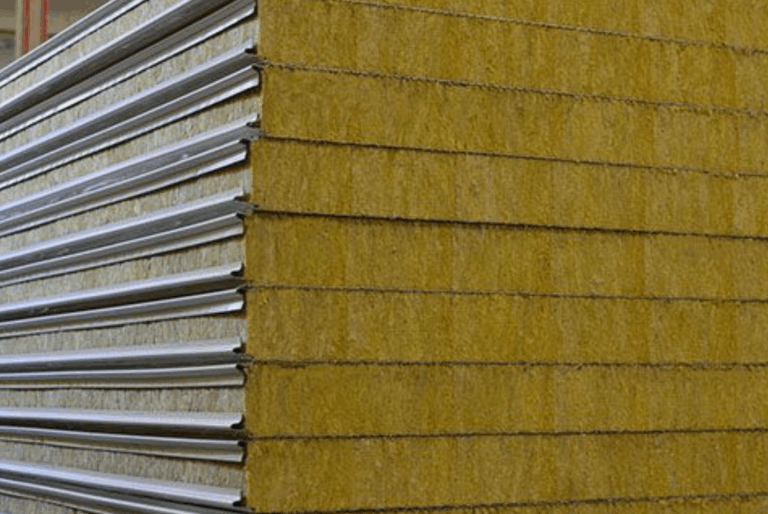A fire rated wall is a crucial component in building construction designed to resist the spread of fire for a specified period. These walls are constructed using materials that can withstand high temperatures and prevent the rapid spread of flames and smoke, thereby providing valuable time for evacuation and minimizing property damage. Fire rated walls are essential for ensuring the safety and structural integrity of buildings, particularly in commercial and industrial settings.
Understanding fire rated walls
Definition and importance of fire rated walls
Fire rated walls, also known as fire-resistant walls, are barriers specifically engineered to withstand fire and heat for a certain period. The main purpose of these walls is to contain the fire to its point of origin, thereby limiting its spread to adjacent areas. This containment is critical in providing occupants with the time they need to safely evacuate the building and allows firefighters to manage the situation more effectively.
The importance of fire rated walls cannot be overstated. They are a fundamental part of fire safety strategies in building construction and are often mandated by building codes and regulations. Fire rated walls contribute to the overall fire resistance of a structure, helping to protect lives and reduce the risk of extensive property damage. By slowing down the spread of fire, these walls can significantly enhance the safety of a building’s occupants and the durability of the building itself.
Key components of fire rated walls
Fire rated wall panels are composed of various materials and components designed to resist fire. The effectiveness of these walls depends on the quality and combination of these elements. Here are the key components typically found in fire rated walls:
- Fire-resistant materials: The core of fire rated walls often includes materials such as gypsum, cement, and specially treated wood. These materials are selected for their ability to withstand high temperatures without degrading.
- Insulating core: Many fire rated walls, particularly sandwich panels, include an insulating core made from materials like rock wool. Rock wool is known for its excellent fire resistance, as it does not burn or produce smoke and helps maintain the structural integrity of the wall during a fire.
- Protective coverings: The exterior of fire rated walls is often covered with protective layers such as steel sheets or fire-resistant boards. These coverings add an extra layer of protection and help the wall withstand direct exposure to flames.
- Sealing and joints: Proper sealing and the use of fire-resistant joints are essential to prevent fire and smoke from passing through gaps in the wall. This includes the use of firestops and other fire-rated sealants.
- Structural reinforcement: In many cases, fire rated walls are reinforced with additional structural elements to ensure they remain intact during a fire. This can include steel reinforcements or other load-bearing components designed to withstand high temperatures and maintain the wall’s integrity.
Fire rated walls are integral to modern construction, especially in areas where fire hazards are significant. By understanding their definition and components, building professionals can better implement these crucial safety features to protect both people and property.
Fire resistance and safety standards
Fire resistance ratings explained
Fire resistance ratings are a measure of how long a material or construction element can withstand fire exposure while maintaining its structural integrity and limiting the spread of fire and smoke. These ratings are typically expressed in minutes or hours, indicating the duration for which the material can resist fire. For example, a fire-rated wall with a 1-hour rating means it can withstand fire exposure for 60 minutes before failing.
The ratings are determined through rigorous testing conducted by certified laboratories. During these tests, materials are exposed to controlled fire conditions that simulate real-life scenarios. The performance of the material is then evaluated based on criteria such as structural stability, integrity, and thermal insulation. The results of these tests are used to classify the materials into different fire resistance categories, helping builders and architects choose the appropriate materials for their projects.
Importance of fire ratings in building construction
Fire ratings play a vital role in building construction, ensuring that structures can provide adequate protection in the event of a fire. These ratings help in:
- Safety: Fire-rated walls help prevent the rapid spread of fire and smoke, providing crucial time for occupants to evacuate and for emergency responders to control the fire.
- Compliance: Building codes and regulations often mandate the use of fire-rated materials in certain areas of a building, such as stairwells, corridors, and between different fire zones. Adhering to these codes is essential for obtaining construction permits and ensuring legal compliance.
- Insurance: Buildings constructed with fire-rated materials may benefit from lower insurance premiums, as they are considered less risky in terms of fire hazards.
- Property protection: Fire-rated walls help protect the structural integrity of a building, minimizing damage and reducing the cost and time required for repairs after a fire incident.
Euroclass and other fire rating systems
The Euroclass system is a standardized classification used in the European Union to rate the fire performance of construction materials. It is based on the EN 13501-1 standard and categorizes materials into seven classes: A1, A2, B, C, D, E, and F.
- A1 and A2: Non-combustible materials with the highest fire resistance.
- B: Materials with limited combustibility.
- C to F: Materials with increasing levels of combustibility and lower fire resistance.
In addition to the Euroclass system, other regions use different fire rating systems. For example:
- ASTM E119 (USA): This standard test method assesses the fire resistance of building elements, providing ratings in hours (e.g., 1-hour, 2-hour).
- BS 476 (UK): This set of standards measures fire resistance and reaction to fire in building materials and structures.
These systems help ensure a consistent approach to fire safety across different regions and building practices.
Materials used in fire rated walls
Common fire-resistant materials
Several materials are commonly used in the construction of fire-rated walls due to their inherent fire-resistant properties:
- Gypsum: Widely used in drywall construction, gypsum panels are known for their ability to resist fire and are often used in fire-rated assemblies.
- Cement: Cementitious materials, such as concrete and mortar, provide excellent fire resistance and are used in various structural elements.
- Treated wood: Wood treated with fire-retardant chemicals can significantly improve its fire resistance, making it suitable for certain applications.
- Brick and block: Masonry materials like brick and concrete block are naturally fire-resistant and commonly used in fire-rated walls.
- Steel: While steel can weaken at high temperatures, it is often used in combination with fire-resistant coatings or encasements to enhance its fire performance.
Rockwool fire rated panels
Rockwool, or mineral wool, is a highly effective fire-resistant material used in sandwich panels for constructing fire-rated walls. Rockwool panels offer several benefits:
- Non-Combustible: Rockwool is classified as non-combustible, meaning it does not burn or contribute to the spread of fire.
- High temperature resistance: It can withstand extremely high temperatures, maintaining its integrity and insulating properties even under intense heat.
- Smoke and drip resistance: Rockwool does not produce smoke or molten droplets when exposed to fire, which enhances safety and visibility during evacuation.
These properties make rockwool panels an ideal choice for creating fire-rated walls in both commercial and industrial buildings.
Structural panels and their fire resistance
Structural panels, such as those made from insulated metal or composite materials, are designed to provide both structural support and fire resistance. Key features include:
- Insulating core: Many structural panels have an insulating core made from materials like polyurethane, polystyrene, or rockwool, which enhance their fire-resistant properties.
- Protective facings: The outer layers of these panels are typically made from steel, aluminum, or other fire-resistant materials, providing additional protection against fire.
- Load-bearing capability: Structural panels are engineered to maintain their load-bearing capacity even when exposed to fire, ensuring the stability of the building during a fire incident.
By incorporating these materials and designs, structural panels offer a comprehensive solution for constructing fire-rated walls that are both durable and effective in fire prevention.
Applications of fire rated walls
Commercial and industrial buildings
Fire rated walls are essential in commercial and industrial buildings, where the risk of fire can be significant due to the presence of flammable materials, high occupancy, and extensive electrical systems. In these environments, fire rated walls serve several critical functions:
Compartmentalization
They help divide large spaces into smaller fire zones, preventing the spread of fire and smoke from one area to another. This compartmentalization is vital in facilities such as factories, warehouses, and office buildings.
Protection of Critical Areas
Fire rated walls are used to protect critical areas like server rooms, storage areas for hazardous materials, and electrical control rooms. Ensuring these areas are secure can prevent significant operational and financial losses.
Compliance with regulations
Commercial and industrial buildings must comply with stringent fire safety regulations. Installing fire rated walls helps these buildings meet legal requirements and ensures the safety of occupants and assets.
Residential applications
In residential settings, fire rated walls contribute to the safety and security of homes by providing a robust barrier against fire. Key applications include:
- Multi-family dwellings: In apartment complexes and multi-family housing units, fire rated walls are used between units to prevent the spread of fire and protect residents. These walls help contain fires within individual units, providing crucial time for evacuation.
- Basements and garages: Areas such as basements and garages often house equipment and flammable materials. Installing fire rated walls in these spaces can prevent fires from spreading to living areas.
- Room divisions: Fire rated walls can also be used to create safe rooms or to separate sleeping areas from high-risk zones like kitchens and utility rooms.
Benefits of fire rated walls
Enhanced safety and protection
The primary benefit of fire rated walls is the enhanced safety and protection they provide. By containing fires and slowing their spread, these walls:
- Protect lives: They provide crucial time for occupants to evacuate safely during a fire emergency, reducing the risk of injury or death.
- Facilitate firefighting efforts: Fire rated walls help firefighters by containing the fire to a specific area, making it easier to control and extinguish.
- Reduce smoke spread: These walls limit the spread of smoke, which is a major cause of injury and death during fires, improving visibility and reducing inhalation risks.
Cost-effectiveness and efficiency
Fire rated walls are a cost-effective solution for enhancing fire safety in buildings. Their benefits include:
- Lower insurance premiums: Buildings with fire rated walls often qualify for lower insurance premiums due to the reduced risk of extensive fire damage.
- Reduced repair costs: By containing fires, these walls help minimize damage to the building structure and contents, leading to lower repair and replacement costs.
- Efficient construction: Fire rated walls, especially prefabricated panels, can be installed quickly and with less labor, reducing overall construction time and costs.
Durability and maintenance
Fire rated walls are designed to be durable and require minimal maintenance, offering long-term benefits:
- Long-lasting protection: Constructed from high-quality, fire-resistant materials, these walls provide reliable protection for many years.
- Low maintenance: Fire rated walls typically require little maintenance compared to other fire protection systems, making them a cost-effective option over the long term.
- Resilience to environmental factors: Many fire rated walls are also resistant to moisture, impact, and other environmental factors, further enhancing their durability and performance in various settings.
By incorporating fire rated walls into building designs, architects and builders can significantly improve the safety, efficiency, and longevity of structures, providing peace of mind to occupants and property owners alike.





